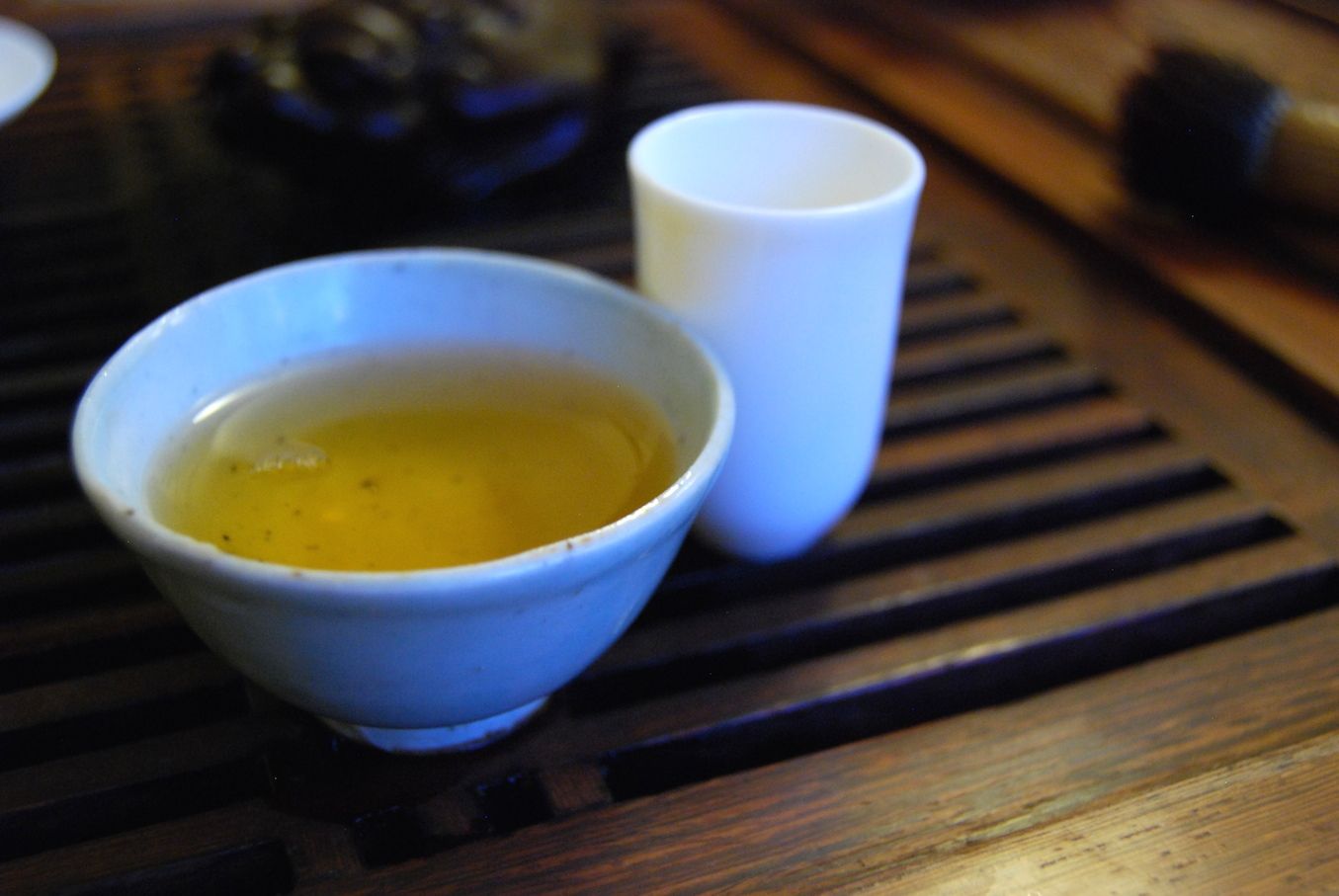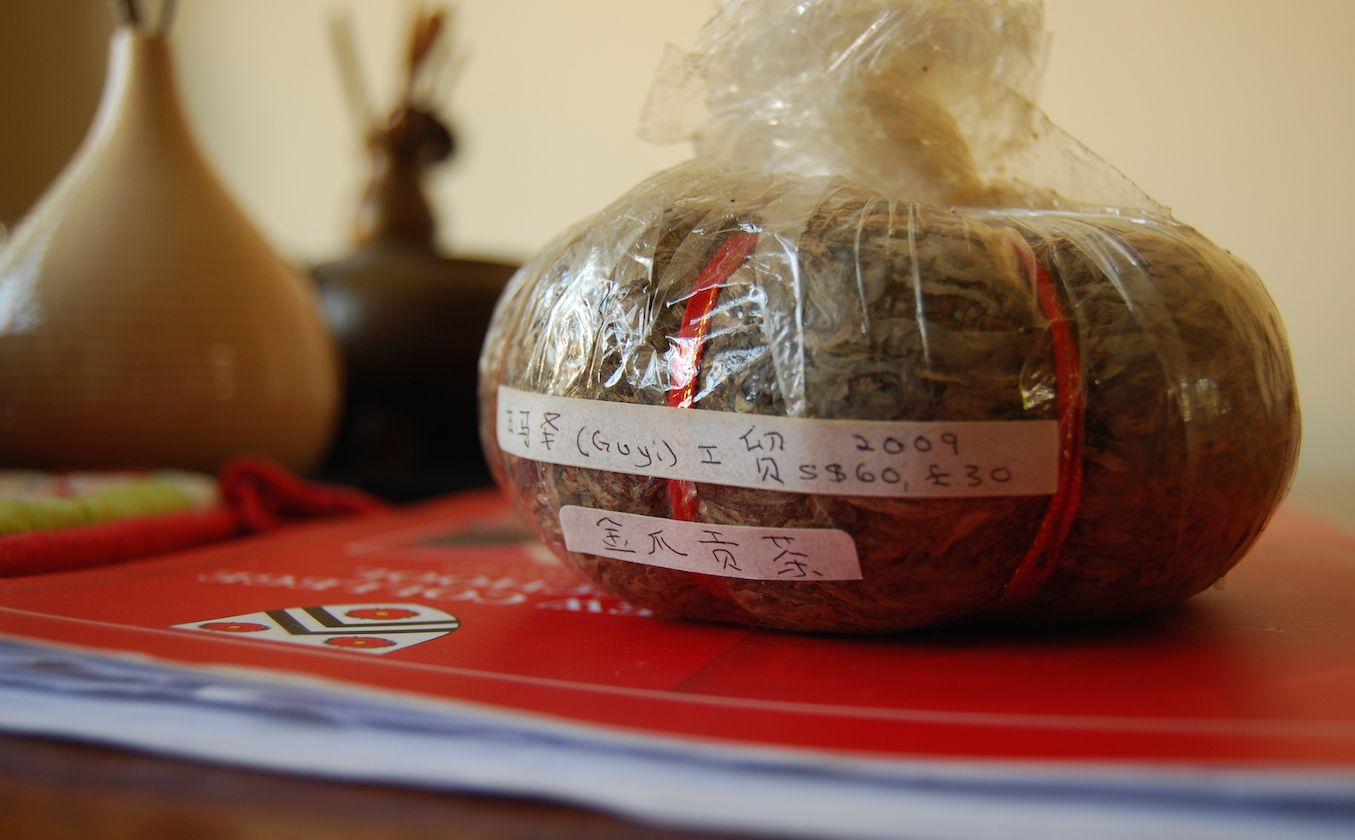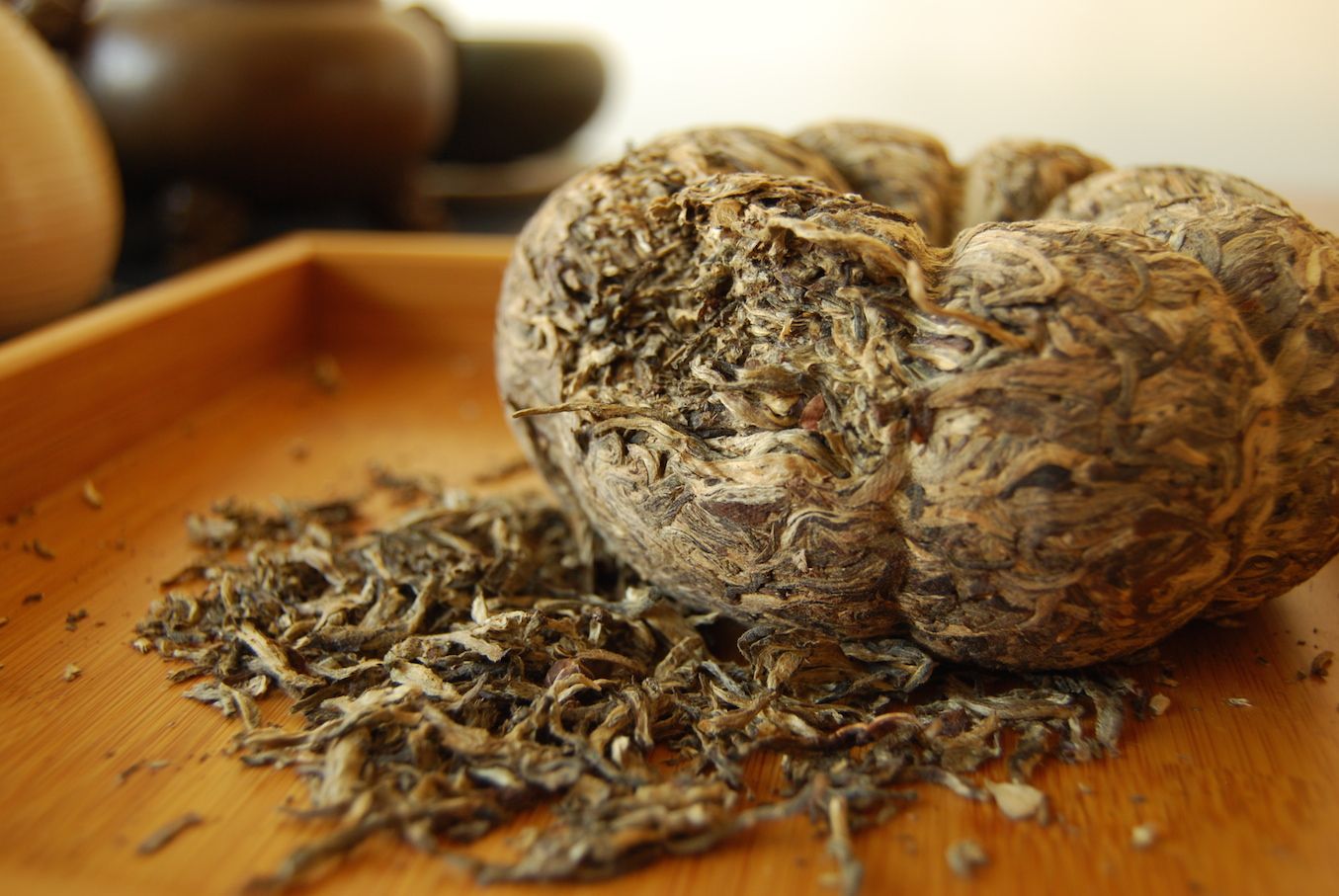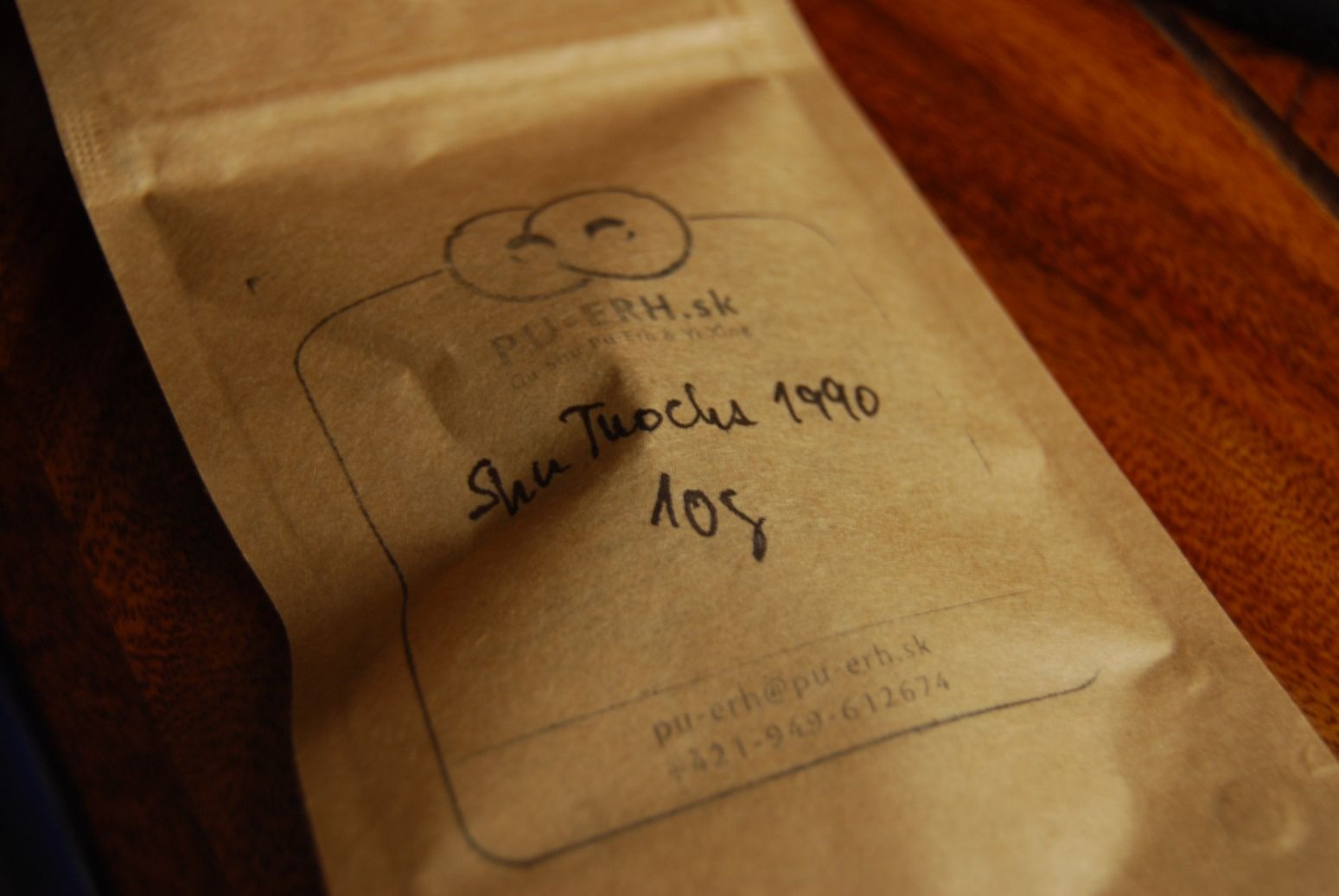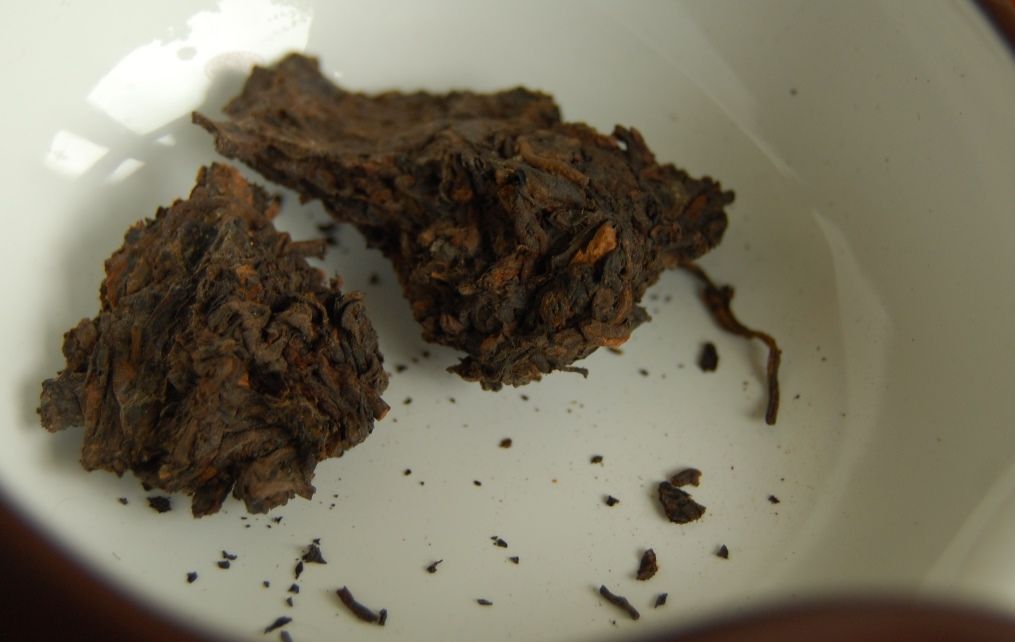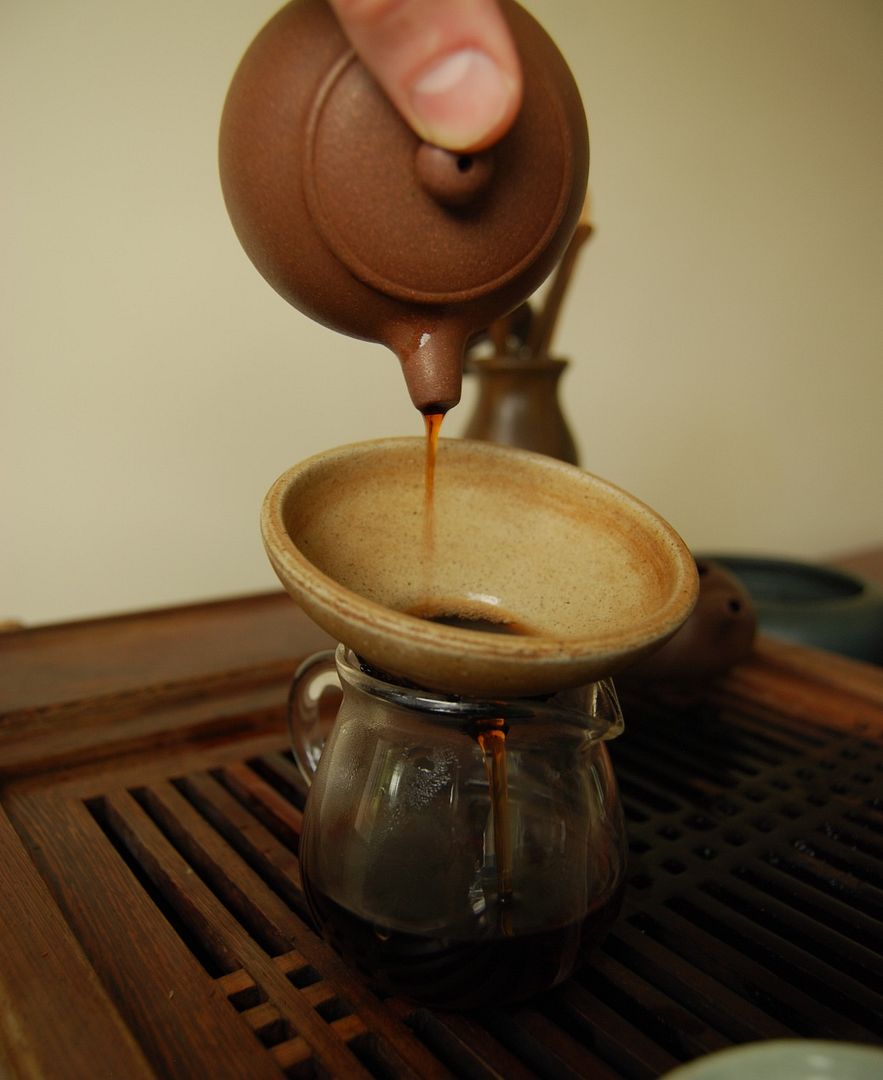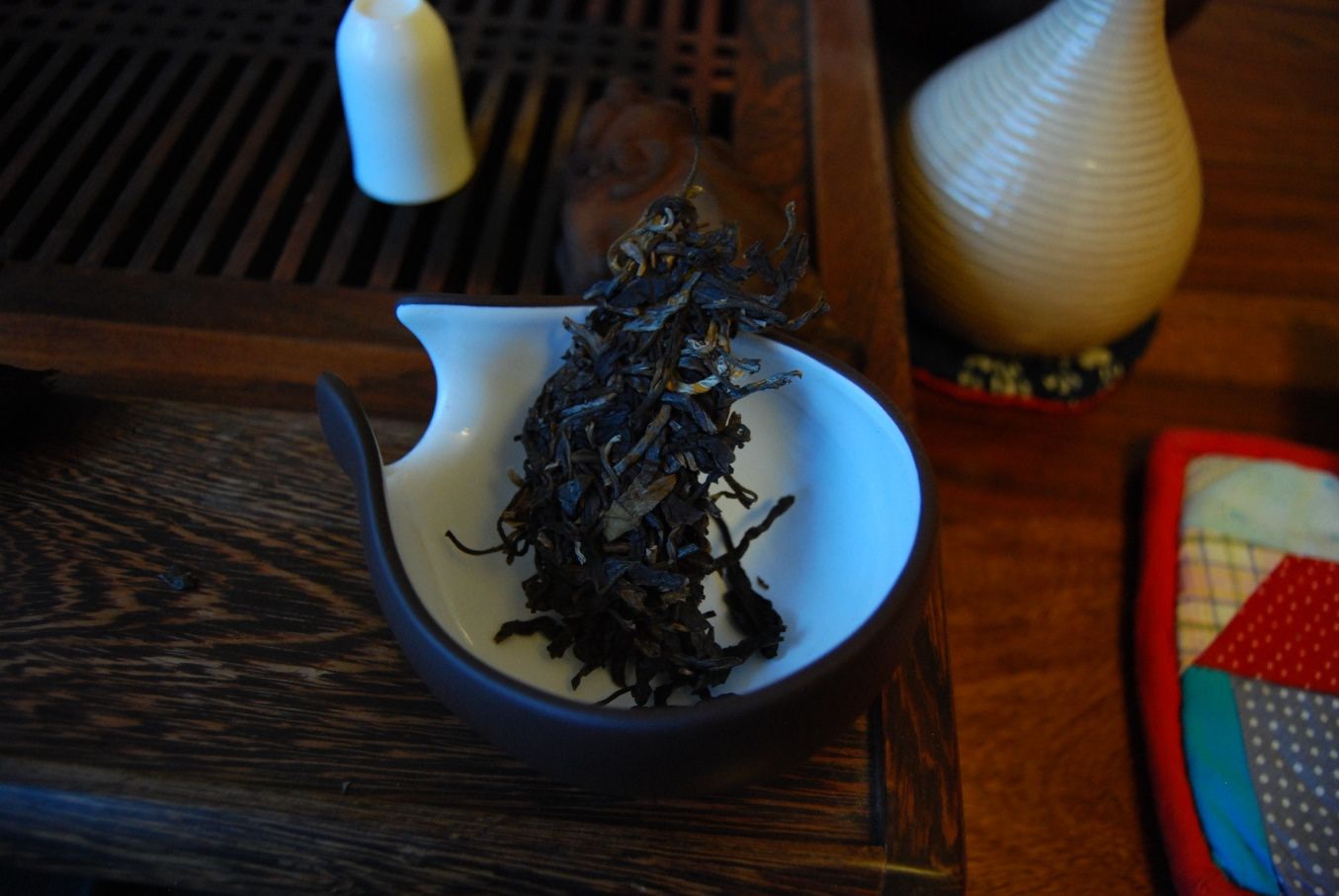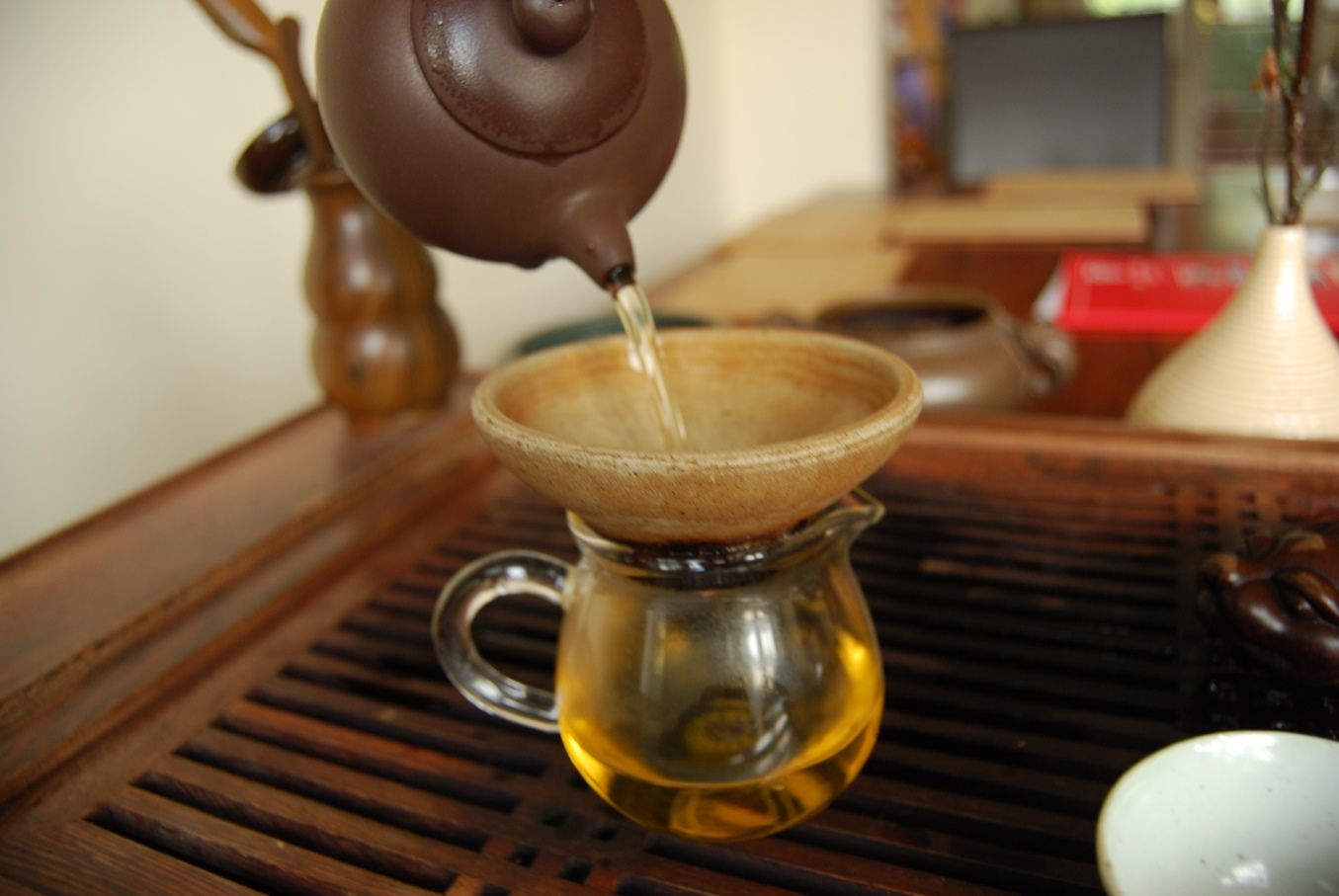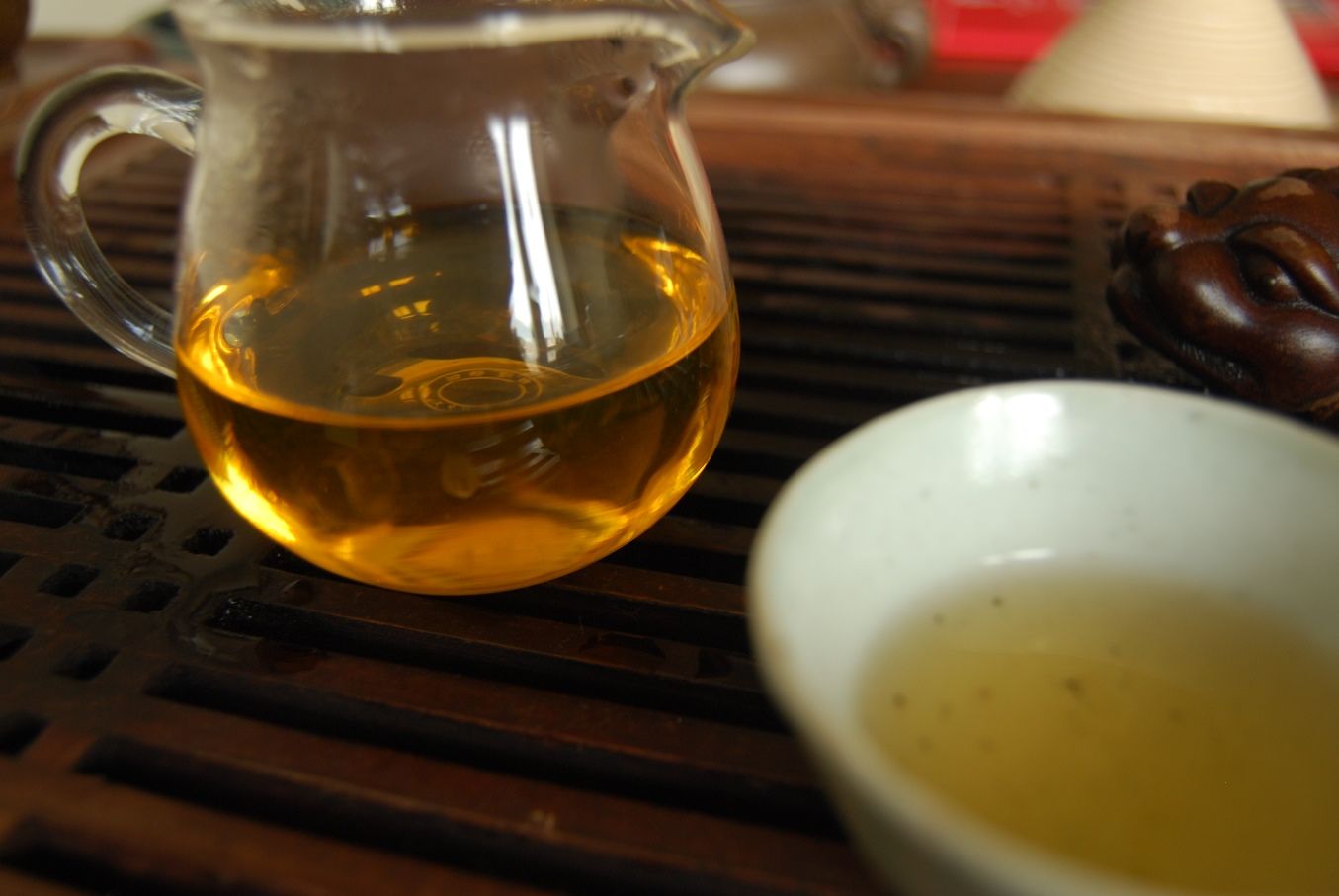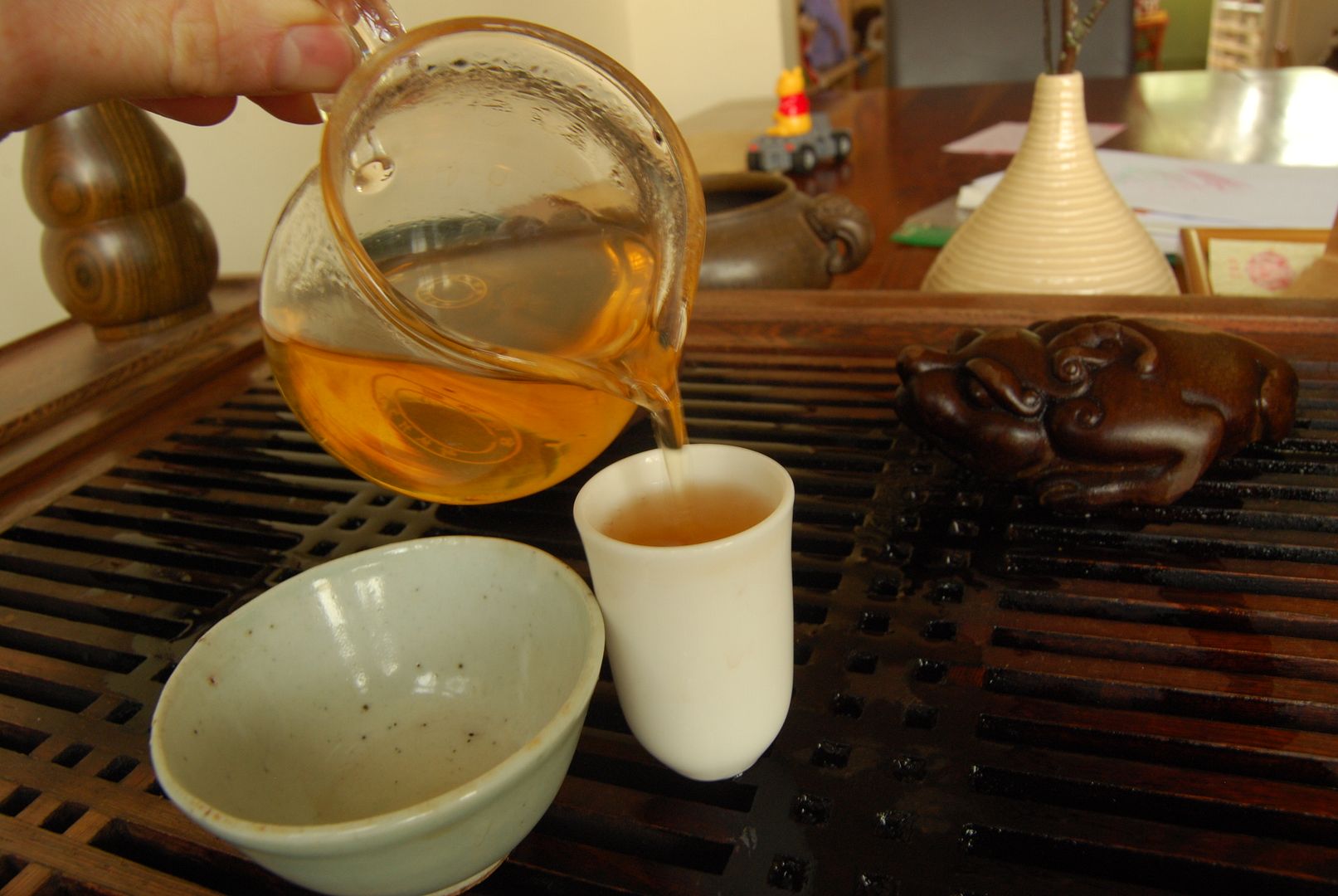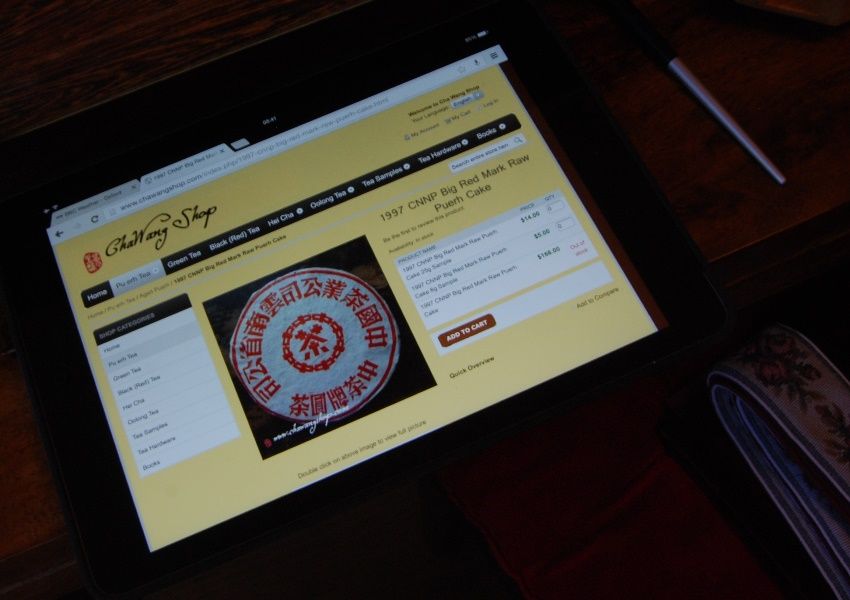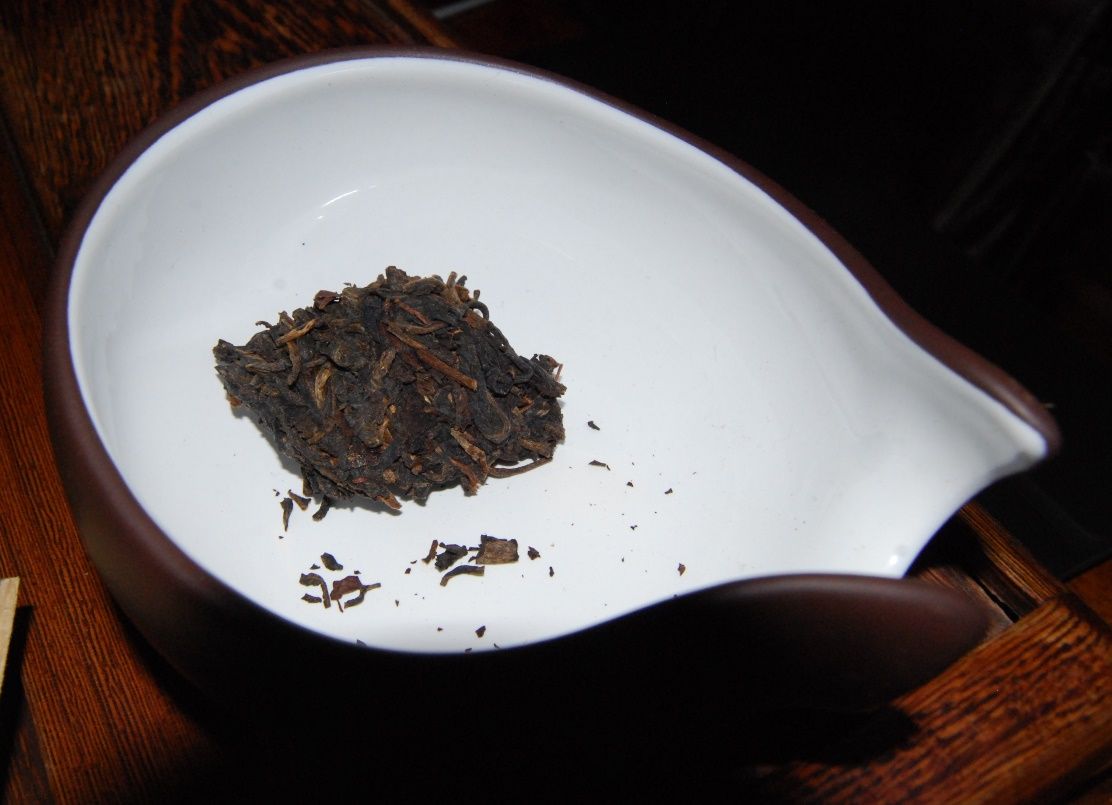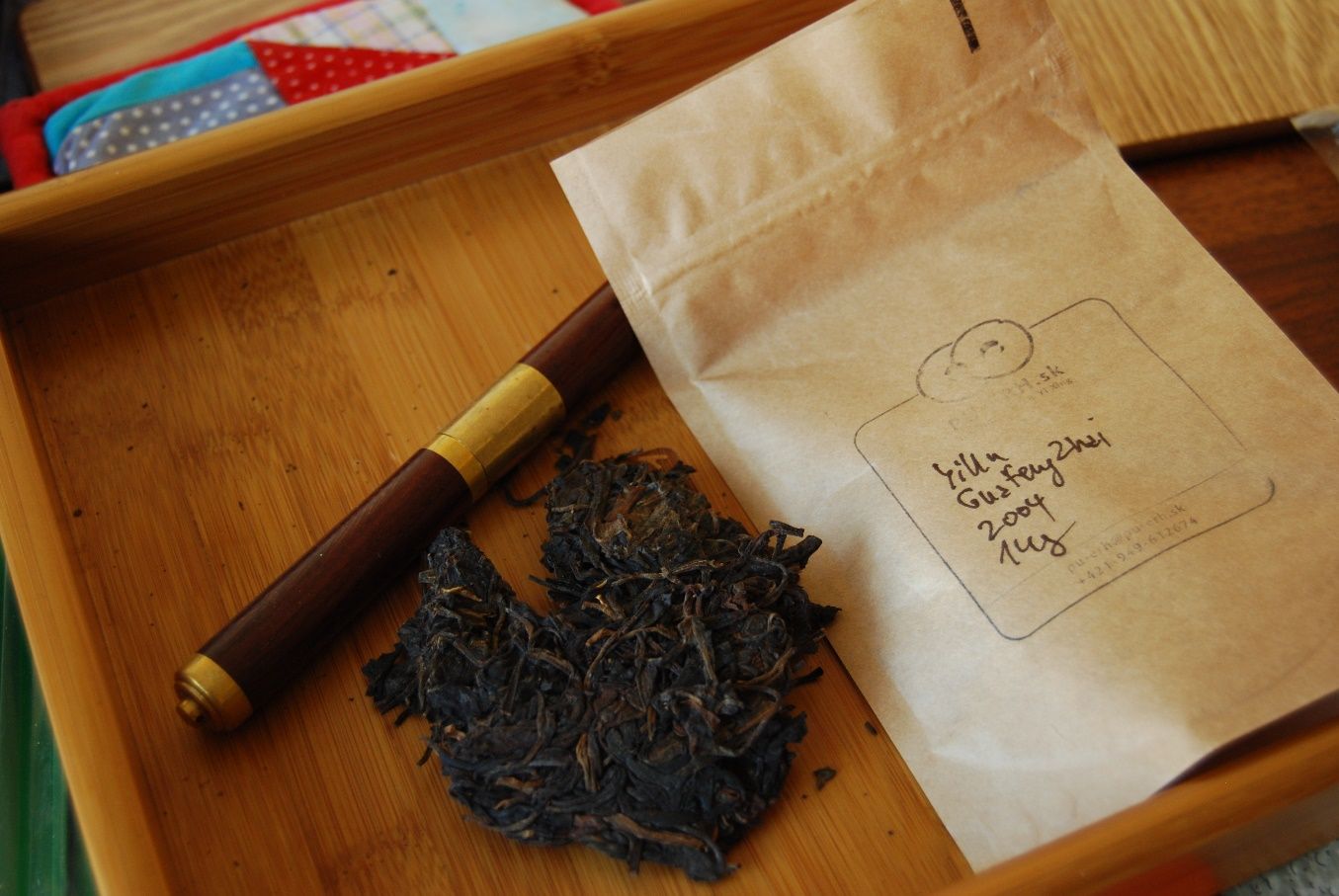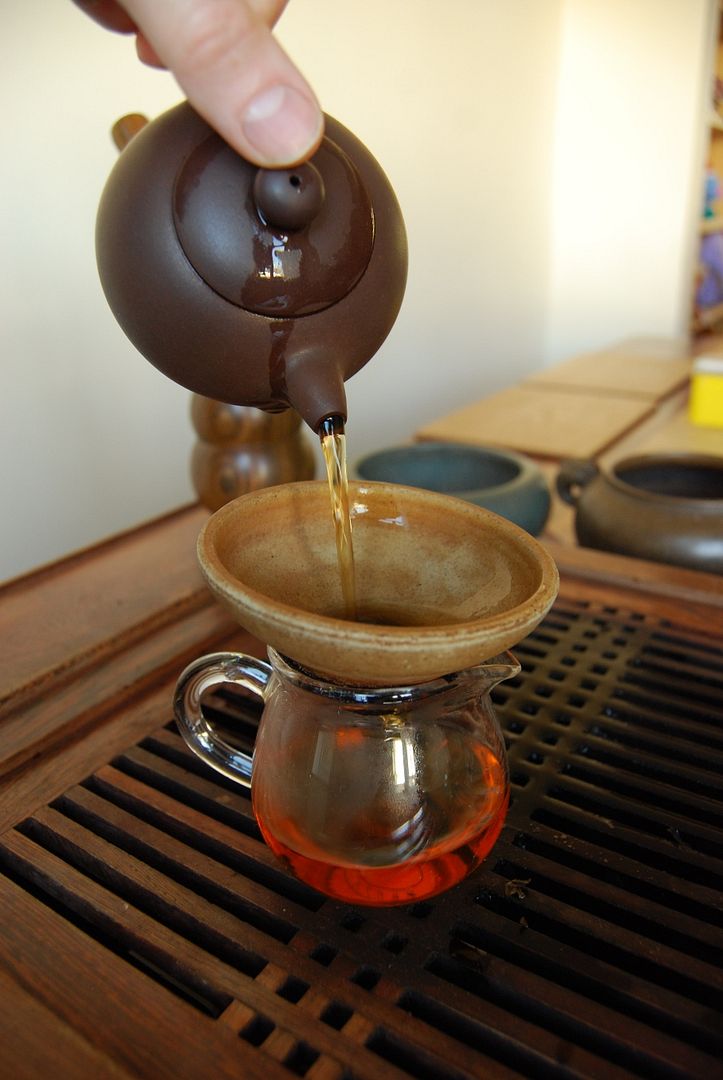Picture the scene: it's 3 a.m., your youngest son has finally gone to sleep, but you just cannot drop off. You head downstairs to the tea-table, with a strong need for a solid, risk-free session. You reach for your old drinking buddy, Douji. What could possibly go wrong?
Technically, nothing did go wrong. I got my required portion of gamma-glutamylethylamide. It came in a warm solution. That much was fine.
This is, bear in mind, the very basic blend from Big Douj. This "blue" version of their Dadou recipe (hence the 2010 Douji "Landadou") used to be priced quite well, presumably in direct competition with the stable blends from Mighty Menghai (where the latter sold for something like $12 at the time). The Dadou and Shengdou blends were always a little more than Dayi, but not too far removed. For that, you landed some slightly better quality taidicha [plantation tea], in the Douji house style. I happen to like both the Douji and Dayi house styles and, after consuming so many gazillions of gallons of each, I feel fairly well-acquainted with them.
The price is the biggest obstacle, now. This Landadou is selling for the paroxysmal sum of nigh on 60 (sixty) American dollaren. That really is simply too much - far more than even Dayi has inflated in the last, what, four years of this cake's age?
The price is the biggest obstacle, now. This Landadou is selling for the paroxysmal sum of nigh on 60 (sixty) American dollaren. That really is simply too much - far more than even Dayi has inflated in the last, what, four years of this cake's age?
So, you gets your taidicha blend, you gets your Douji house style of rich base notes, you gets your basic endurance, and one or more huigans. But at sixty units of American currency? If anyone has paid such a price for Douji, I want to have words - private, quiet words - with you. I want to explore what kind of mind you have. I have to know how such a person can exist.
On the plus side, the remainder of the sample lasted ages in my lab, delivering basic sweetness for hours.
On the plus side, the remainder of the sample lasted ages in my lab, delivering basic sweetness for hours.



